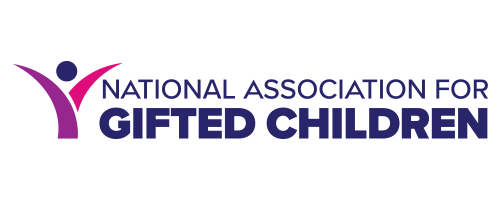Using Artificial Intelligence for Intelligent Learners
Pervasive AI use is no longer coming, it is here. Many futurists believe that although there may be trepidation toward the changes it will bring, they “see AI bringing about some notably positive outcomes — providing new opportunities while shielding us even further from rigid organizations, toxic workplaces, and drudge work.” (McKendrick, 2024) As we know, educational organizations can be bastions of rigidity and drudge work. Harnessing AI to make our work more engaging, creative, and relevant, educators can teach students to use AI as a new tool to enhance their learning. What are some examples for how classroom teachers can leverage AI to better meet the needs of the GT learned under their tutelage, as we have with other revolutions in technology?
Historically, educators were warned about trying "new fangled" technological use in their practices. These included the use of slates vs. birch bark, ball point pens vs. ink pens, the internet for research, new devices such as iPads, laptops and cell phones, for example. Eventually, many educators used these tools as they took on the challenge of preparing students for the 21st century But did we? As we are a quarter of the way through this century, it seems that, sadly, some states and districts educators may again be focusing on avoiding any of the new technology. How can we embrace the tools that AI brings us to enrich our instruction, particularly for our advanced learners? How can we teach educators and students to use AI to an educational advantage?
In October of 2024, Gerardo Dillehay, a gifted education specialist and Colorado Association for the Gifted and Talented (CAGT) member, wrote of a vision he had for a transformative model of education powered by Artificial Intelligence. In a CAGT quarterly newsletter, he described a future where traditional classrooms are replaced with flexible, collaborative spaces. AI delivers personalized instruction to students, regardless of their ability levels, allowing them to progress at their own pace with just two hours of focused academic learning daily. Teachers would shift roles to become emotional and motivational guides, freeing time for students to explore life skills and hands-on STEAM projects.
Dillehay emphasized that this isn't just a distant dream—some private schools already use similar approaches. However, he noted that AI tools can be costly and inaccessible to many public schools, raising concerns about global competitiveness. He urged educators to engage with AI
proactively, viewing it as a tool for empowerment rather than a threat, warning that failure to adapt may leave schools—and nations—behind. He ended with a hopeful reminder that innovation is within reach and essential in a rapidly changing world. (G. Dillehay, personal communication, October 18, 2024; OpenAI 2025*).
Some examples of ways to leverage AI tools were shared in a recent article in Edutopia written by Matthew Kloosterman. AI can become a mentor for GT learners, as well as a facilitator for student-led inquiry. The article lays out several ways that AI can become more integrated into education. It can offer new opportunities to enhance student-led inquiry and project-based learning. Matthew Kloosterman shares practical ways educators can use Chat GPT as a mentor, simulator, and thinking partner to support deeper student engagement. Examples are given for three ways to harness ChatGPT in the classroom. The first is using it to create real-world scenarios. In this simulation, he has students positioned as professionals such as scientists and editors simulating realistic challenges or disagreements. These simulations help students explore problem-solving strategies used by real experts. Second, he shows how to build critical thinking skills in teaching students how to write effective ChatGPT prompts and identify inaccuracies thus understanding AI’s limitations. And finally, he shares how to prompt ChatGPT to act as a content expert, such as an historian or biologist and then ask it questions to deepen their understanding of a topic. This use builds inquiry skills and encourages independent learning. He has shown how ChatGPT can be more than a fact machine—it can model thinking, simulate a mentorship, and promote problem-solving. When students learn to use AI intentionally, they become more empowered, independent learners ready to navigate an AI-rich future. (Kloosterman, 2023; OpenAI, 2025*)
Several renowned members of NAGC have written other blogs related to creating curriculum using AI. In her April 2025 NAGC blogspot, Kristen Seward talked about the history of using technology specifically for gifted learners, and the educators who work with them. She also shared Del Siegel's work on using AI to support the three legs of talent development. In his article, he references another article on academic acceleration, classroom inductive teaching techniques focusing on depth and complexity, and opportunities for interest-based activities as possible uses for AI.
As Amy Takabori (2005) shares in a blog on the Carnegie Learning website, it’s clear to us all that cheating and plagiarizing have been around much longer than modern technology and isn’t something new with technology. One of the best ways to confront this type of misuse of resources is to meet it head-on. She suggests overtly teaching students about ethical practices in the use of AI. Knowing that many of our GT students have a high sense of morality may provide an opening through which to again use AI as a tool. She discusses 10 ways of empowering students to use AI ethically instead of cheating. These include learning that AI bots are large language models, not interactive search engines and always checking for accuracy, omissions, discrepancies, bias, and verification of facts. Using AI as a tool rather than a substitute for their own critical thinking is also very important. Empowering them to use AI “to extend, not replace their own thinking.” Encouraging students to be upfront and transparent in their use of AI, they can use it as a tool for metacognition to determine if it was helpful or not. It’s also important to teach students what cheating is and isn’t in terms of AI and any other source. Since AI is new to us all, she feels that it is important to have students feel comfortable asking questions about it with teachers and others. Respecting privacy and security along with other digital citizenship ethics and while empowering them to share what they’ve learned about AI are a couple of final suggestions that she gives.
AI is most likely going to be in our lives to stay, if it isn’t already. As educators shouldn’t we learn how to use it to increase the creativity, engagement and authenticity of our instruction? If it can give us more time to interact with our students, won’t it make us more effective teachers? Isn’t it our responsibility to include responsible, ethical, thoughtful, and practical use of this resource in the instruction of our students?
*Summarized by ChatGPT
Here are more resources related to ways to use AI for GT learners:
“Applications of Artificial Intelligence Tools in the Gifted Education Classroom – A Conference Presentation” by Jackie Gerstein, Ed.D. User Generated Education, July 14-18, 2024.
“New Project Explores Use of AI in the Gifted Classroom | Johns Hopkins Center for Talented Youth (CTY)” by Maria Blackburn, John’s Hopkins Center for Talented Youth, March 8, 2024.
“Chatting with ChatGPT” by Kadir Bahar, Teaching for High Potential, August 2024
“9 Tips for Using AI for Learning (and Fun!)” by Daniel Leonard, Edutopia, October 30, 2023
“Students Are Using AI Already. Here’s What They Think Adults Should Know” by Ryan Nagelhout, Harvard Graduate School of Education, September 2024
“How can Generative AI Support Teachers?” by Kadir Bahar, Teaching for High Potential, May 2024
“How to Avoid 5 Common AI Pitfalls” by Emily Rankin, Edutopia, June 26, 2025
“Using AI Tools to Support Project-Based Learning” by Jorge Valenzuela, Edutopia, June 20, 2025
References
Kloosterman, M. (2023, October 24). Using CHATGPT to support student-led inquiry. Edutopia. https://www.edutopia.org/article/using-chatgpt-support-student-led-inquiry
McKendrick, J. (2024, July 2). Futurists positive about Ai’s impact on jobs, urge wide perspective. Forbes. https://www.forbes.com/sites/joemckendrick/2024/03/11/futurists-positive-about-ais-impact-on-jobs-urge-wide-perspective/
Scott, K. (2018, July 17).Did You Know (Shift Happens) - 2018 Remix. YouTube. https://www.youtube.com/watch?v=TwtS6Jy3ll8
Seward, K. (2025, April 3). Using Artificial Intelligence to Transform Curriculum for Gifted Students and Professional Development for Teachers. National Association for Gifted Children. June 30, 2025, https://nagc.org/blogpost/2061726/509113/Using-Artificial-Intelligence-to-Transform-Curriculum-for-Gifted-Students-and-Professional-Development-for-Teachers
Siegle, D. (2024). Using artificial intelligence (AI) technology to support the three legs of talent development. Gifted Child Today, 47(3), 221–227. https://doi.org/10.1177/10762175241242495
Stahl, B. C., & Eke, D. (2024). The ethics of CHATGPT – exploring the ethical issues of an emerging technology. International Journal of Information Management, 74, 102700. https://doi.org/10.1016/j.ijinfomgt.2023.102700
Takabori, A. (2025, May 5). How to help students use AI ethically. https://www.carnegielearning.com/blog/ethical-ai-chatgpt-students


